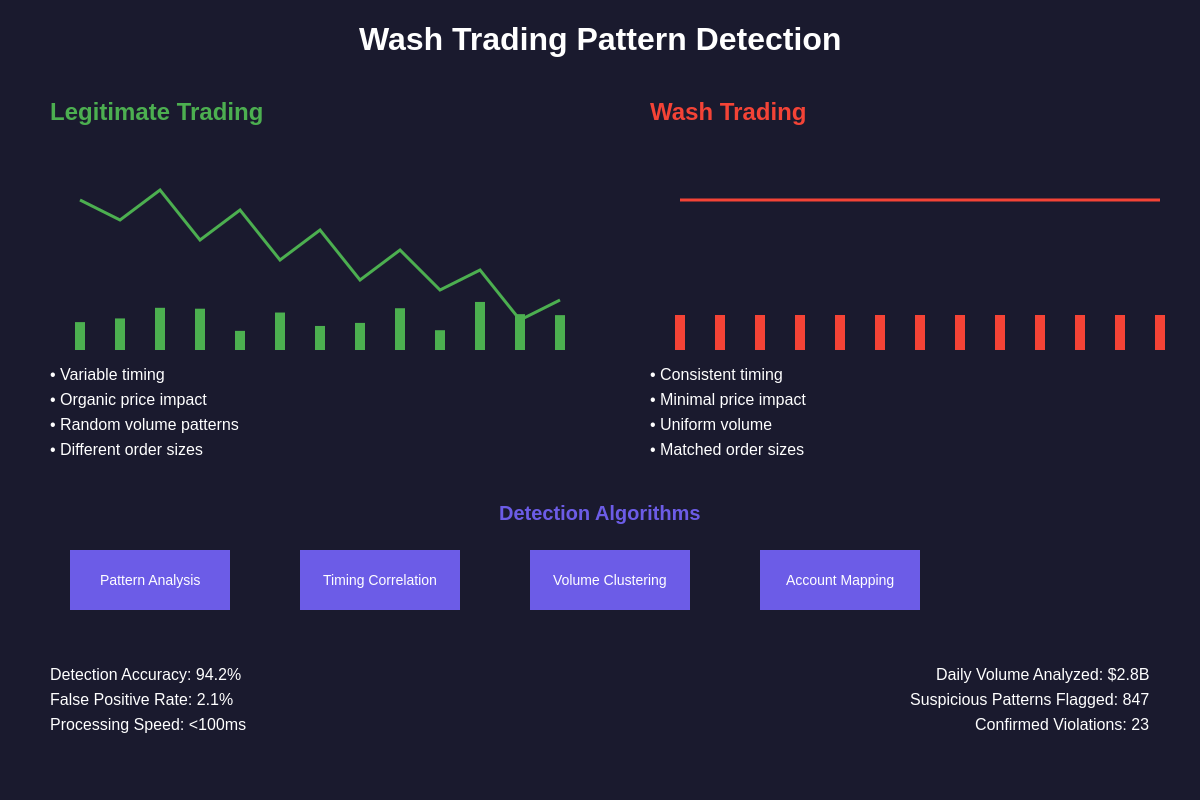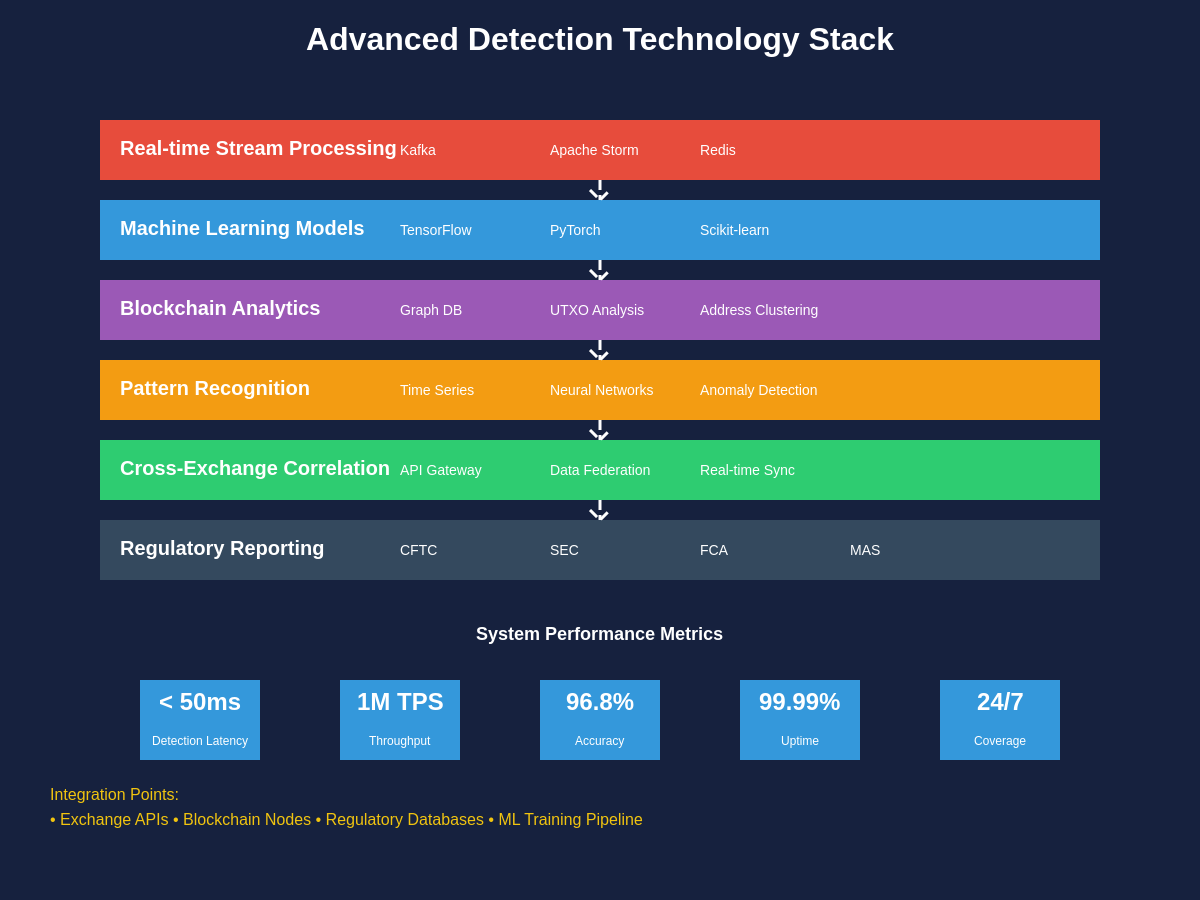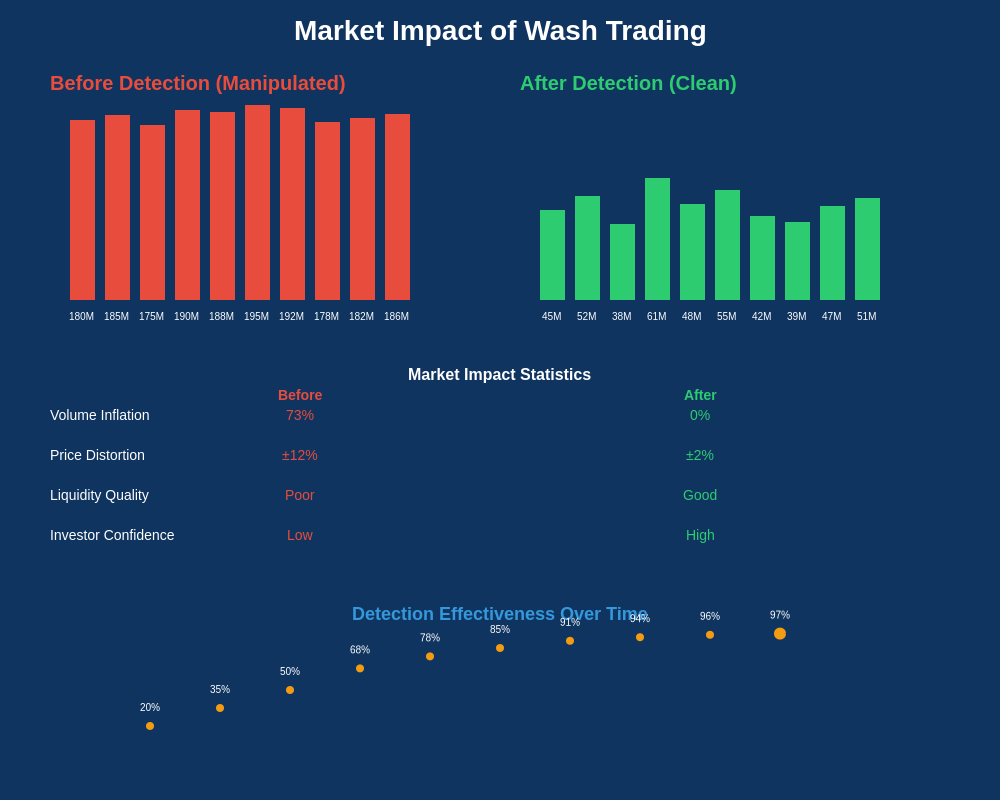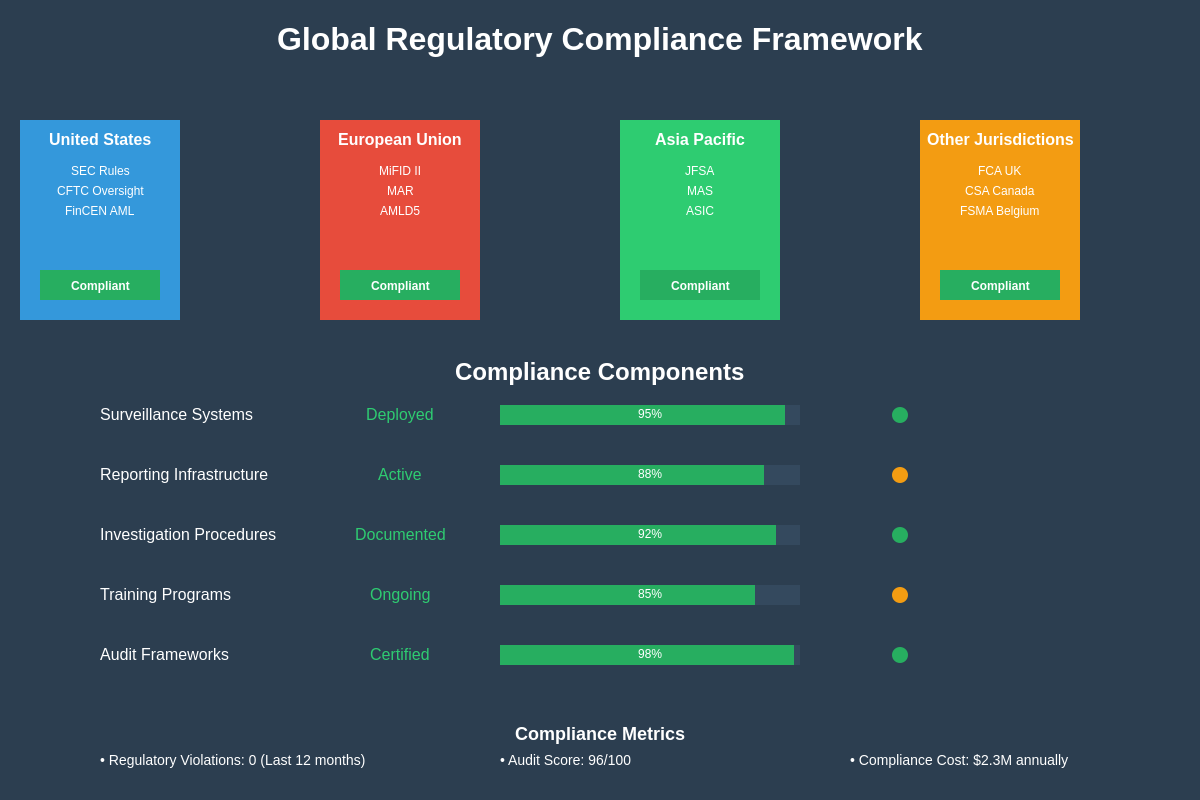The Persistent Challenge of Market Manipulation
Wash trading represents one of the most pervasive and sophisticated forms of market manipulation in the cryptocurrency industry, with artificial volume inflation distorting price discovery mechanisms and misleading investors about genuine trading activity. This deceptive practice involves traders executing simultaneous buy and sell orders for the same asset, often using multiple accounts or coordinated entities, to create the illusion of legitimate trading volume without any actual change in ownership or market position.
The prevalence of wash trading across cryptocurrency exchanges has reached epidemic proportions, with industry analysts estimating that artificial volume inflation affects up to 70% of reported trading activity on certain platforms during peak manipulation periods. This manipulation not only undermines market integrity but also affects algorithmic trading systems, institutional investment decisions, and regulatory compliance efforts across the entire cryptocurrency ecosystem.
Modern wash trading schemes have evolved far beyond simple self-trading to encompass sophisticated networks of coordinated accounts, automated trading bots programmed to simulate organic market activity, and complex cross-exchange arbitrage operations designed to obscure the artificial nature of the trading volume. These advanced techniques require equally sophisticated detection mechanisms that can analyze multiple data streams, identify subtle patterns of coordinated behavior, and distinguish between legitimate arbitrage activity and manipulative trading schemes.
The economic incentives driving wash trading include exchange fee rebates, market maker rewards, token listing requirements based on trading volume thresholds, and attempts to manipulate cryptocurrency rankings on market data aggregation platforms. Many exchanges have historically benefited from inflated volume figures through increased visibility, higher fee revenue from legitimate traders attracted by apparent liquidity, and improved competitive positioning relative to rival platforms.
Regulatory pressure to combat wash trading has intensified significantly as cryptocurrency markets mature and traditional financial institutions increase their participation in digital asset trading. Regulators worldwide are implementing stricter surveillance requirements, demanding greater transparency in trading activity reporting, and imposing substantial penalties on exchanges that fail to adequately detect and prevent market manipulation activities.
Technical Foundations of Wash Trading Detection
The technical infrastructure required for effective wash trading detection combines advanced data analytics, machine learning algorithms, blockchain forensics, and real-time surveillance systems capable of processing massive volumes of trading data across multiple market venues. These systems must analyze not only direct trading patterns but also correlate behavior across different accounts, time periods, and even separate exchanges to identify sophisticated manipulation schemes.

Behavioral pattern analysis forms the cornerstone of modern wash trading detection, examining trading sequences, timing patterns, order book dynamics, and execution characteristics that distinguish artificial volume from genuine market activity. Advanced analytics platforms like those used by professional traders employ sophisticated algorithms to identify suspicious patterns such as perfectly matched buy and sell orders, abnormal timing correlations between opposite-side trades, and statistical anomalies in trading frequency and volume distributions.
Blockchain forensics capabilities enable detection systems to trace cryptocurrency movements across different addresses and exchanges, identifying circular trading patterns where assets move through multiple accounts before returning to the original source. These capabilities are particularly important for detecting wash trading schemes that attempt to obscure their artificial nature by distributing trading activity across multiple cryptocurrency addresses and trading platforms.
Machine learning models trained on historical trading data can identify subtle indicators of wash trading that might escape traditional rule-based detection systems, including complex multi-account coordination patterns, timing correlations that suggest automated trading bot activity, and volume distribution anomalies that indicate artificial market activity. These models continuously evolve as they encounter new manipulation techniques, improving their accuracy and reducing false positive rates over time.
Real-time surveillance systems must process enormous volumes of trading data with minimal latency to detect ongoing wash trading activity before it can significantly distort market conditions. These systems integrate multiple data sources including order book changes, trade execution records, account relationship mapping, and external market data to provide comprehensive coverage of potential manipulation activities.
Exchange Surveillance Infrastructure
Leading cryptocurrency exchanges have invested heavily in sophisticated surveillance infrastructure designed to detect, prevent, and report suspicious trading activity in compliance with evolving regulatory requirements and industry best practices. These systems represent some of the most advanced market surveillance technology deployed in any financial market, combining cutting-edge analytics with comprehensive data integration capabilities.

Multi-layered detection systems typically include pre-trade filters that evaluate incoming orders for potential manipulation indicators, real-time monitoring that analyzes ongoing trading activity for suspicious patterns, and post-trade analysis that conducts comprehensive reviews of completed trading sessions. Each layer employs different detection methodologies and operates on different time scales to provide comprehensive coverage of potential wash trading activities.
Account relationship mapping capabilities enable exchanges to identify connections between different user accounts that might indicate coordinated trading activity, including shared IP addresses, similar registration information, correlated trading patterns, and cryptocurrency address relationships revealed through blockchain analysis. These mapping systems must balance privacy considerations with surveillance requirements while maintaining the ability to detect sophisticated multi-account manipulation schemes.
Cross-market surveillance has become increasingly important as wash trading schemes span multiple exchanges and trading venues, requiring coordination between different platforms to identify manipulation activity that might not be apparent when analyzing individual exchanges in isolation. Industry consortiums and regulatory initiatives are developing standardized data sharing protocols to enable more effective cross-market surveillance while respecting competitive boundaries and data privacy requirements.
Artificial intelligence integration within surveillance systems enables more sophisticated pattern recognition, automated alert generation, and intelligent case prioritization that helps compliance teams focus their investigative resources on the most significant potential violations. These AI systems can adapt to new manipulation techniques more quickly than traditional rule-based systems while providing better documentation of their decision-making processes for regulatory review.
Regulatory Framework and Compliance Challenges
The regulatory landscape governing wash trading detection and prevention varies significantly across different jurisdictions, creating complex compliance challenges for exchanges operating in multiple markets while maintaining consistent global surveillance standards. Regulatory approaches range from prescriptive rule-based requirements to principles-based frameworks that provide exchanges with greater flexibility in designing their surveillance systems.
Market abuse regulations in traditional financial markets provide the foundation for cryptocurrency wash trading rules, though the unique characteristics of digital assets require specialized adaptations to address cross-border transactions, pseudonymous trading, and the decentralized nature of blockchain technology. Regulators are working to develop cryptocurrency-specific guidance while ensuring consistency with existing market manipulation frameworks.
Surveillance reporting requirements mandate that exchanges maintain detailed records of their wash trading detection activities, including system performance metrics, investigation outcomes, and enforcement actions taken against violating traders. These reporting requirements help regulators assess the effectiveness of exchange surveillance programs while providing valuable data for industry-wide analysis of manipulation trends and detection methodologies.
International coordination efforts aim to harmonize wash trading detection standards across different regulatory jurisdictions, reducing regulatory arbitrage opportunities for manipulative traders while enabling more effective cross-border investigation and enforcement activities. Organizations such as IOSCO and the Financial Action Task Force are developing frameworks for international cooperation in cryptocurrency market surveillance.
Enforcement mechanisms for wash trading violations include account restrictions, trading bans, financial penalties, and referrals to law enforcement agencies for criminal prosecution in cases involving significant market manipulation. The effectiveness of these enforcement mechanisms depends on the exchange’s ability to accurately identify violations, document evidence that meets legal standards, and coordinate with relevant regulatory authorities.
Technological Innovation in Detection Methods
Advanced analytics platforms now employ sophisticated statistical methods to distinguish between legitimate arbitrage trading and artificial wash trading, analyzing price impact patterns, volume distribution characteristics, and execution timing that reveal the true nature of trading activity. These platforms integrate multiple data sources and employ ensemble methods that combine different analytical approaches to improve detection accuracy while reducing false positive rates.
Artificial intelligence and machine learning technologies have revolutionized wash trading detection by enabling systems to identify complex patterns that would be impossible to detect using traditional rule-based approaches. Deep learning models can analyze high-dimensional trading data to identify subtle correlations and patterns that indicate coordinated manipulation activity, while reinforcement learning systems can adapt to new manipulation techniques as they emerge.
Blockchain analytics integration provides unprecedented visibility into the movement of cryptocurrency assets across different addresses and exchanges, enabling detection systems to trace circular trading patterns and identify the ultimate beneficial ownership of trading accounts. These capabilities are particularly valuable for detecting sophisticated wash trading schemes that attempt to disguise their artificial nature through complex cryptocurrency routing and mixing services.
Network analysis techniques borrowed from social media and fraud detection applications help identify coordinated trading networks by analyzing communication patterns, timing correlations, and behavioral similarities across different trading accounts. These techniques can reveal hidden relationships between seemingly independent traders and detect coordination that might not be apparent through traditional trading pattern analysis.
Real-time anomaly detection systems continuously monitor trading activity for deviations from normal market behavior, using statistical methods and machine learning models to identify unusual patterns that might indicate wash trading or other forms of market manipulation. These systems must balance sensitivity with specificity to detect manipulation without generating excessive false alerts that overwhelm surveillance teams.
Economic Impact and Market Integrity
The economic consequences of wash trading extend far beyond the immediate financial gains realized by manipulative traders, affecting market liquidity, price discovery efficiency, and investor confidence in cryptocurrency markets. Artificial volume inflation distorts fundamental market metrics used by institutional investors, algorithmic trading systems, and market data providers to assess trading opportunities and market conditions.

Price discovery mechanisms are particularly vulnerable to wash trading manipulation, as artificial volume can create false impressions of market depth and liquidity that lead to mispriced assets and inefficient capital allocation. This manipulation can persist for extended periods before being detected, during which time it may influence significant investment decisions and market structure developments.
Institutional investor participation in cryptocurrency markets is increasingly dependent on accurate market data and transparent trading conditions, making wash trading detection a critical factor in the broader adoption of digital assets by traditional financial institutions. Many institutional investors have specific requirements for market surveillance and manipulation detection that must be met before they will commit significant capital to cryptocurrency trading.
Market data integrity affects the accuracy of cryptocurrency indices, exchange rankings, and analytical tools used throughout the industry for investment decision-making and risk management. Wash trading manipulation can distort these critical market infrastructure components, creating cascading effects that extend far beyond the specific assets or exchanges where the manipulation occurs.
Competitive dynamics within the cryptocurrency exchange industry are significantly affected by wash trading, as exchanges with higher reported volumes often attract more legitimate trading activity, creating incentives for manipulation that can distort natural market competition. Effective wash trading detection helps level the competitive playing field by ensuring that exchange rankings and market share reflect genuine trading activity rather than artificial manipulation.
Industry Standards and Best Practices
The development of industry standards for wash trading detection has accelerated as the cryptocurrency market matures and regulatory oversight increases, with leading exchanges collaborating to establish common frameworks and share best practices for market surveillance. These standards address technical specifications for detection systems, procedural requirements for investigation and enforcement, and data sharing protocols that enable cross-market surveillance.

Surveillance system certification programs provide independent validation of exchange surveillance capabilities, helping establish minimum standards for wash trading detection while providing regulatory authorities and institutional clients with confidence in exchange market integrity measures. These certification programs typically include technical audits, procedural reviews, and ongoing monitoring requirements that ensure continued effectiveness of surveillance systems.
Cross-industry collaboration initiatives enable exchanges to share information about emerging manipulation techniques, coordinate responses to multi-venue manipulation schemes, and develop collective defense mechanisms against sophisticated wash trading operations. These collaborative efforts must balance competitive considerations with the collective interest in maintaining market integrity and regulatory compliance.
Technology vendor standards help ensure that commercial surveillance systems meet minimum requirements for wash trading detection effectiveness, data integration capabilities, and regulatory reporting functionality. These standards facilitate comparison between different surveillance solutions while encouraging innovation in detection methodologies and system performance.
Professional training and certification programs for market surveillance personnel help ensure that exchange compliance teams have the knowledge and skills necessary to effectively operate sophisticated wash trading detection systems and conduct thorough investigations of suspicious trading activity. These programs address both technical aspects of surveillance systems and procedural requirements for regulatory compliance.
Case Studies and Enforcement Actions
Recent enforcement actions against exchanges and traders involved in wash trading schemes provide valuable insights into detection methodologies, investigation procedures, and the effectiveness of various penalty mechanisms. These cases demonstrate both the sophistication of modern manipulation schemes and the evolving capabilities of surveillance systems to detect and document evidence of market abuse.
High-profile wash trading cases have revealed the use of sophisticated trading bots programmed to simulate organic market activity while actually engaging in artificial volume generation, highlighting the importance of behavioral analysis and artificial intelligence in modern detection systems. These cases also demonstrate the challenges of distinguishing between legitimate algorithmic trading and manipulative automated trading activities.
Cross-border enforcement coordination has become increasingly important as wash trading schemes span multiple jurisdictions and regulatory frameworks, requiring cooperation between different regulatory authorities and exchanges to effectively investigate and prosecute market manipulation activities. These cases highlight the need for standardized international frameworks for information sharing and coordinated enforcement actions.
Penalty structures for wash trading violations vary significantly across different jurisdictions and exchanges, ranging from warnings and account restrictions to substantial financial penalties and criminal prosecution. The effectiveness of these penalties in deterring future manipulation depends on the certainty of detection, the severity of consequences, and the broader regulatory environment surrounding cryptocurrency trading.
Technological evolution in manipulation techniques is clearly evident in case studies that show how wash trading schemes have adapted to detection systems, employing more sophisticated coordination methods, longer time horizons, and greater geographic distribution to avoid surveillance. These cases inform the development of next-generation detection systems and highlight the ongoing arms race between manipulators and surveillance technology.
Future Developments and Emerging Technologies
The future of wash trading detection will likely involve greater integration of artificial intelligence, expanded cross-market surveillance capabilities, and enhanced blockchain analytics that provide more comprehensive visibility into cryptocurrency trading activity. These technological advances will need to balance detection effectiveness with privacy considerations and computational efficiency requirements.
Decentralized exchange surveillance presents unique challenges for wash trading detection, as traditional account-based monitoring becomes less effective in anonymous or pseudonymous trading environments. New detection methodologies must adapt to the decentralized nature of these platforms while maintaining the ability to identify artificial volume generation and market manipulation activities.
Regulatory technology developments are likely to include standardized surveillance reporting frameworks, automated regulatory filing systems, and enhanced coordination mechanisms between exchanges and regulatory authorities. These developments will help streamline compliance processes while improving the overall effectiveness of market surveillance efforts.
Cross-chain analytics capabilities will become increasingly important as cryptocurrency trading activity spans multiple blockchain networks and layer-2 solutions, requiring surveillance systems to track asset movements and trading patterns across different technological platforms and consensus mechanisms. These capabilities will need to address the technical challenges of integrating data from diverse blockchain architectures while maintaining real-time surveillance effectiveness.
Industry collaboration platforms may evolve to include shared surveillance infrastructure, collective threat intelligence, and coordinated response mechanisms that enable more effective detection and prevention of sophisticated manipulation schemes that span multiple exchanges and market venues. These platforms will need to balance competitive considerations with collective security interests while maintaining appropriate data privacy and confidentiality protections.
Implementation Challenges and Solutions
Technical implementation of comprehensive wash trading detection systems requires significant investment in infrastructure, personnel, and ongoing technology development, creating particular challenges for smaller exchanges that may lack the resources necessary for sophisticated surveillance capabilities. Industry solutions include shared surveillance services, standardized detection frameworks, and regulatory guidance that helps exchanges implement effective systems within their resource constraints.
Data integration challenges arise from the need to correlate information across multiple sources, including internal trading data, external market feeds, blockchain analytics, and regulatory databases, while maintaining data quality, consistency, and real-time processing capabilities. Advanced data management systems and standardized data formats help address these challenges while enabling more effective surveillance across different technological platforms.
False positive management represents a critical operational challenge for wash trading detection systems, as excessive alerts can overwhelm investigation teams while insufficient alerts may allow manipulation to go undetected. Sophisticated alert prioritization systems, machine learning-based filtering, and continuous system tuning help optimize the balance between detection sensitivity and operational efficiency.
Regulatory compliance complexity increases as exchanges operate across multiple jurisdictions with different wash trading detection requirements, reporting obligations, and enforcement frameworks. Comprehensive compliance management systems and expert legal guidance help exchanges navigate these complex requirements while maintaining consistent global surveillance standards.
Privacy and data protection considerations must be balanced against surveillance requirements, particularly in jurisdictions with strict data protection regulations that may limit the types of information that can be collected, analyzed, and shared for market surveillance purposes. Privacy-preserving analytics techniques and carefully designed data governance frameworks help address these challenges while maintaining effective surveillance capabilities.
Global Perspective and Market Evolution
International coordination efforts in wash trading detection have intensified as cryptocurrency markets become increasingly global and interconnected, requiring cooperation between regulatory authorities, exchanges, and technology providers across different jurisdictions and legal frameworks. These efforts include standardized surveillance frameworks, information sharing agreements, and coordinated enforcement actions that address the cross-border nature of modern manipulation schemes.
Emerging market considerations recognize that cryptocurrency adoption patterns and regulatory frameworks vary significantly across different regions, requiring adaptable surveillance approaches that can accommodate local market characteristics while maintaining consistent global standards for manipulation detection and prevention. This includes consideration of different technological capabilities, regulatory maturity levels, and market structure variations across different jurisdictions.
Market structure evolution continues to affect wash trading detection requirements as new types of trading venues, settlement mechanisms, and market participants enter the cryptocurrency ecosystem. Detection systems must adapt to handle decentralized exchanges, atomic swaps, layer-2 scaling solutions, and other innovations that may create new opportunities for manipulation while requiring different surveillance approaches.
Institutional adoption trends are driving demand for more sophisticated and transparent wash trading detection capabilities, as traditional financial institutions require high standards of market integrity and regulatory compliance before committing significant resources to cryptocurrency trading activities. This institutional demand is accelerating the development of professional-grade surveillance systems and industry standards.
Technology standardization efforts aim to create interoperable surveillance systems that can share data and coordinate responses across different exchanges and jurisdictions, while maintaining competitive differentiation and respecting proprietary technology investments. These standardization efforts include data formats, communication protocols, and analytical methodologies that enable more effective collective defense against sophisticated manipulation schemes.
This article is for informational purposes only and does not constitute financial advice. Cryptocurrency trading involves substantial risk and may result in significant losses. Always conduct your own research and consult with qualified financial advisors before making investment decisions. The regulatory landscape for cryptocurrency trading is rapidly evolving, and readers should stay informed about current requirements in their jurisdiction.